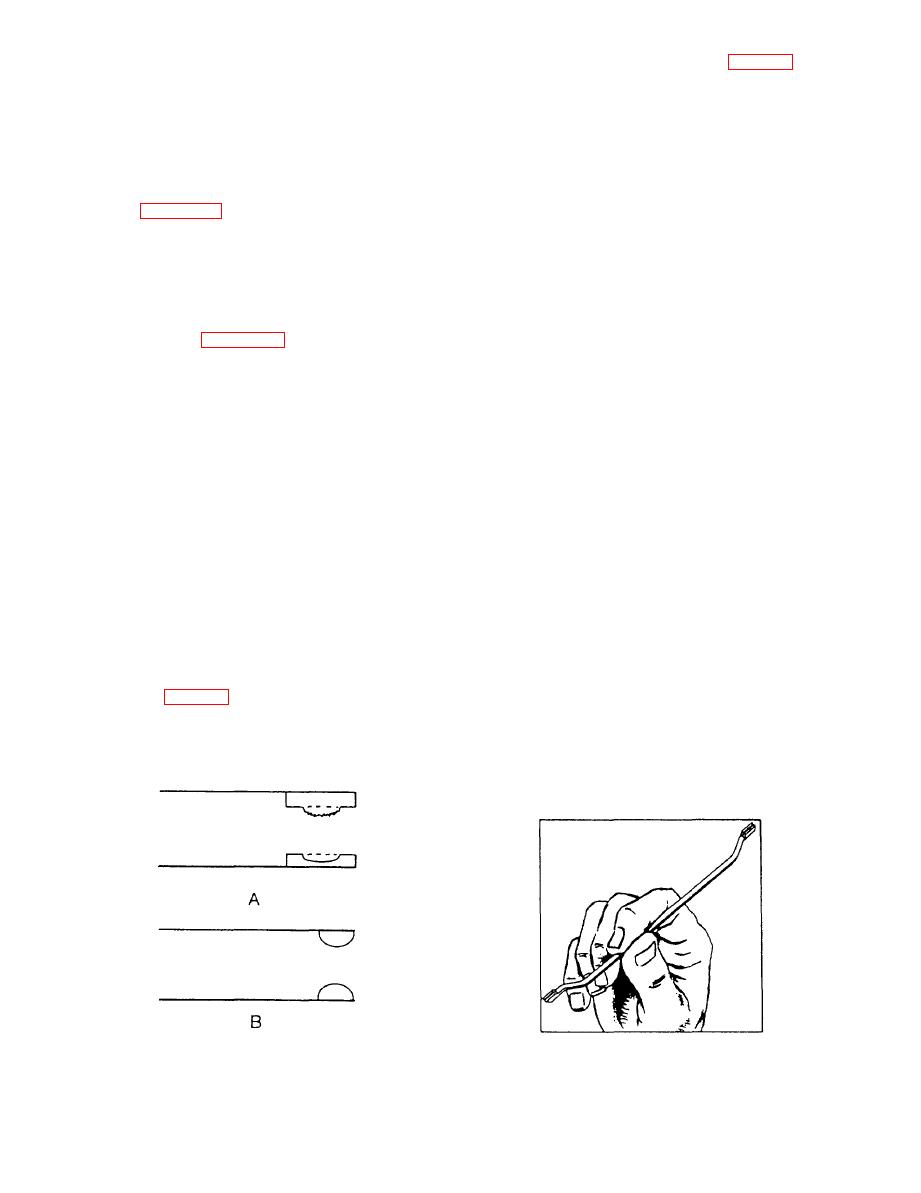 |
|||
|
|
|||
| ||||||||||
|
|
 surfaces; and as the carbon rings build up, the relay
Relays similar to the shunt relay (fig. 2-24) have
contacts are held open.
replaceable contacts that should be maintained similar
to switch contacts. See Maintenance of Switches at the
When current flows in one direction through a
beginning of this chapter for further information.
relay, the contacts may be subjected to an effect called
During preventive maintenance you should check
cone and crater. The crater is formed by the transfer
for charred or burned insulation on the relay and for
of the metal of one contact to the other contact, the
darkened or charred terminal leads. Both of these
deposit being in the form of a cone. This condition is
conditions indicate overheating, and further
shown in figure 2-26, view A.
investigation should be made to determine the cause.
Some relays are equipped with ball-shaped
One possible cause for overheating is loose power
contacts which, in many applications, are superior to
terminal connections, allowing arcing at the
the flat contacts. Dust or other substances do not
connection.
collect as readily on a curved surface. In addition, a
Covers should not be removed from semisealed
ball-shaped contact can penetrate film more easily
relays in the field. Removal of a cover in the field,
than a flat contact. Figure 2-26, view B, shows a set of
although it might give useful information to a trained
ball-shaped contacts.
eye, may result in entry of dust or other foreign
When you clean or service ball-shaped relay
material that may cause poor contact or an open
contacts, be careful to avoid flattening or otherwise
circuit. Removal of the cover may also result in loss
altering the rounded surfaces of the contacts. A
of or damage to the cover gasket. When the relay is
burnishing tool should be used to clean relay contacts.
installed in a position where there is a possibility of
Be sure you do not touch the surface of the tool that is
contact with explosive fumes, extra care should be
used to clean the relay contacts. After the burnishing
taken with the cover gasket. Any damage to, or
tool is used, clean it with alcohol. Never use sandpaper
incorrect seating of, the gasket increases the
or emery cloth to clean relay contacts. Many relays
possibility of igniting the vapors.
have been damaged or ruined because the contact
Should an inspection determine that a relay has
points were cleaned with sandpaper or emery cloth
exceeded its safe life, the relay should be removed
instead of a burnishing tool. The use of sandpaper or
immediately and replaced with another of the same
emery cloth may cause bending of the contact springs
type. The replacement relay must have the same
and other damage. Excessively burned and pitted
characteristics or ratings, such as voltage, amperage,
contacts cannot be repaired by burnishing.
type of service, number of contacts, or continuous or
When a relay has bent contacts, you should use a
intermittent duty.
point bender (fig. 2-27) to straighten the contacts. The
Relay coils usually consist of a single coil. If a
use of any other tool could cause further damage, and
relay fails to operate, the coil should be tested for open
the entire relay would then have to be replaced.
circuit, short circuit, or short to ground. An open coil
is a common cause of relay failure.
|
|
Privacy Statement - Press Release - Copyright Information. - Contact Us |